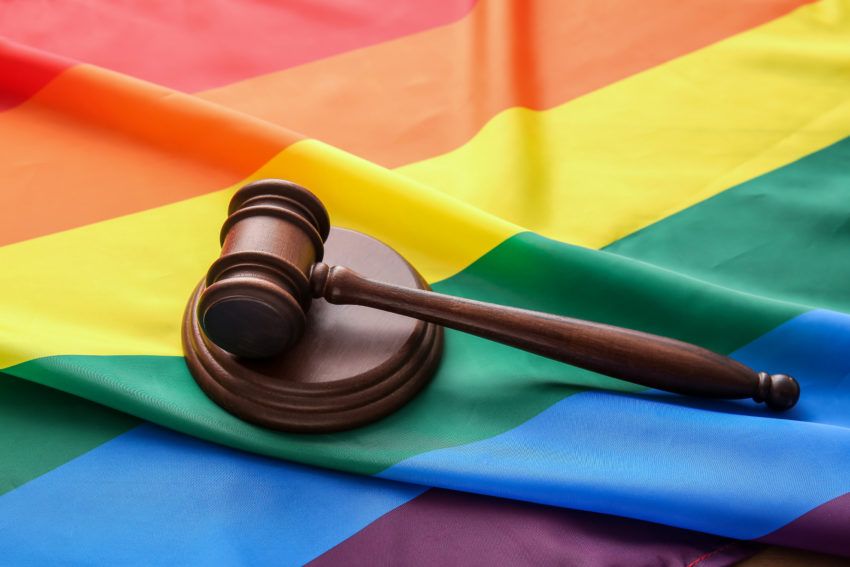US President Joe Biden affirmed his commitment to protecting and furthering LGBT+ rights via a new executive order, writes ESG Clarity‘s sister title DiversityQ.
While he has spoken out on LGBT+ rights for many years, this new ruling will further entrench community inclusion in key areas, including employment.
The ‘Executive Order on Preventing and Combating Discrimination based on Gender Identity or Sexual Orientation’ will go further in protecting sexual minorities across all spheres of public life, say its advocates. Alphonso David, president of US LGBT+ advocacy group, Human Rights Campaign, said the order was “the most substantive, wide-ranging executive order concerning sexual orientation and gender identity ever issued by a United States President.”
Here’s what it contains:
Biden’s LGBT+ order
The order ensures that federal agencies implement the Supreme Court’s 2020 decision in Bostock v. Clayton County, Georgia, which established that LGBT+ people are protected from employment discrimination under Title VII of the Civil Rights Act of 1964. The order will also ensure that people are protected against discrimination based on sexual and gender identity, including gender expression in housing, education, and health care.
Its impact on LGBT+ people at work
In section 1 of the order, it reads: “Adults should be able to earn a living and pursue a vocation knowing that they will not be fired, demoted, or mistreated because of whom they go home to or because how they dress does not conform to sex-based stereotypes.”
While this might sound like standard protection for LGBT+ people, having the “mistreatment” element enshrined in law could stop passive or more indirect forms of discrimination in the workplace such as transphobic or anti-gay jokes. Protecting staff from having to dress in a way that conforms to “sex-based stereotypes” could liberate all employees, including cis-gender men and women regardless of their sexuality, as well as trans people.
A later section of the order shows an enlightened awareness of the lived experiences of LGBT+ people of colour, reading: “Discrimination on the basis of gender identity or sexual orientation manifests differently for different individuals, and it often overlaps with other forms of prohibited discrimination, including discrimination on the basis of race or disability. For example, transgender Black Americans face unconscionably high levels of workplace discrimination, homelessness, and violence, including fatal violence.”
This part of the order shows the Biden administration to have an understanding of the intersectional forms of oppression minorities can experience, which can include a combination of social, racial, ethnic, sexual, gender-based, and physical discrimination. Apart from offering more comprehensive protection for LGBT+ people, the ruling could also help employers understand the need for paying extra attention to minorities within minority groups, such as Black transgender employees for example, who are statistically more likely to experience harassment in their daily lives, including at work.
By seeing minority groups within a workforce as separate entities, employers may make the mistake of thinking they have remedied an inclusion situation, such as establishing a ‘women’s safe space’, and by doing so could alienate trans women and other LGBT+ staff who identify as female. Therefore, Biden’s order could help employers become more inclusive by helping them understand the complexities of gender and sexuality identity.
See also: – Asset management ‘several years behind’ on LGBT+ diversity
LGBT+ workplace discrimination: the facts
Biden’s order comes at a good time for LGBT+ people in the workplace, as figures from a McKinsey report last year showed LGBT+ women faced “increased rates of sexual harassment and discrimination” in America’s corporate institutions. In contrast, a negative workplace environment for trans employees affected their chances of job motivation and career progression.
The study also said that LGBT+ women were more “underrepresented than women generally in America’s largest corporations,” where the discrepancy could be down to LGBT+ women being too afraid to come out at work in case they should face discrimination. This ‘fear of coming out’ in the workplace is backed up by statistics from a 2018 study by UK LGBT+ charity Stonewall. It found that 35% of LGBT+ staff hid their identity at work for fear of discrimination where two in every five bi-sexual employees weren’t out. The study also found that one in ten BAME LGBT+ employees had been physically attacked at work.
On the topic of the enforcement of workplace dress codes, the UK Government published a workplace guide in 2018, suggesting employers “avoid gender-specific prescriptive requirements.” However, this is only a recommendation while Biden’s US order could go further in liberating LGBT+ and all staff from the restrictions of gender-prescriptive dress codes, whatever their individual identities.
Overall, the contents of the order could be useful to D&I minded employers on both sides of the Atlantic. While it reveals an intersectional understanding of discrimination as pertains to LGBT+ people, it also protects all employees from being forced into gender conformity by extension. Simply reading the order could help employers understand their LGBT+ staff better, making the implementation of effective inclusion policies more likely, which could also lead to higher retention and career progression levels.








